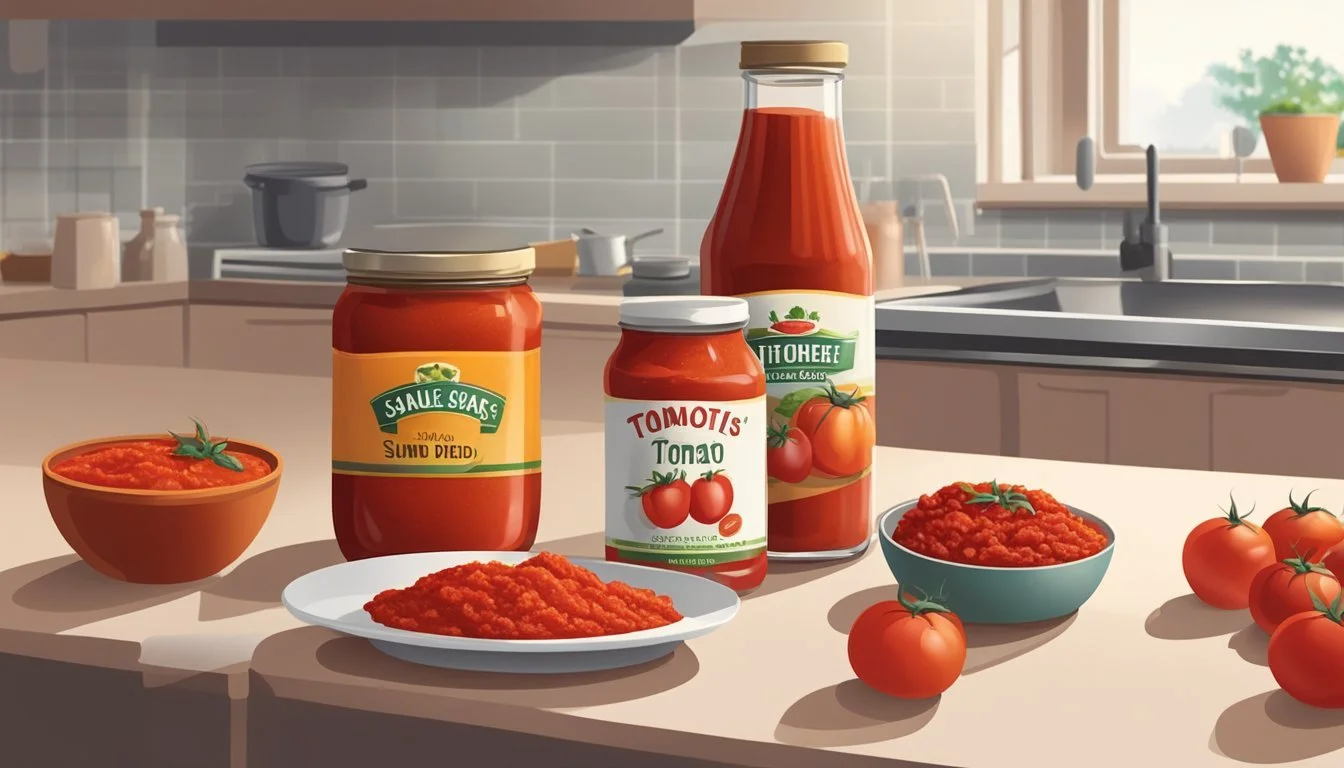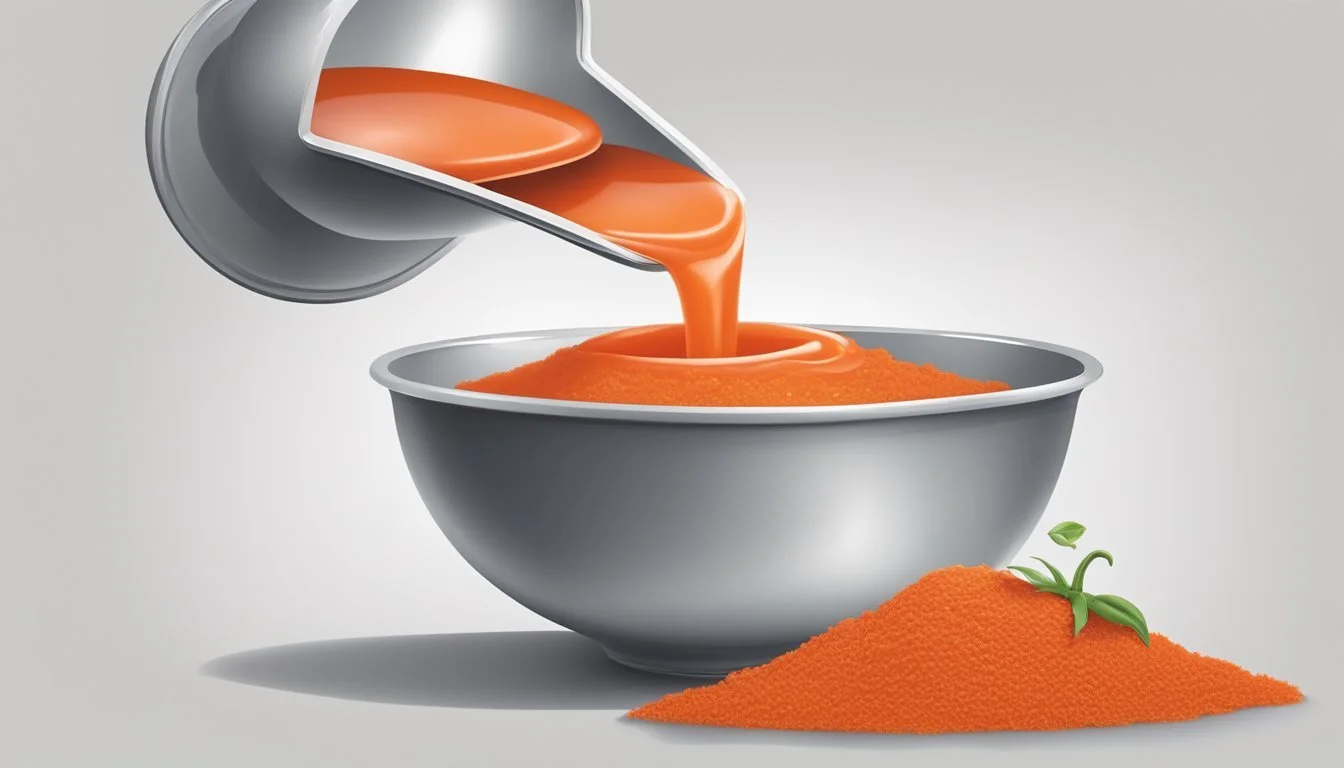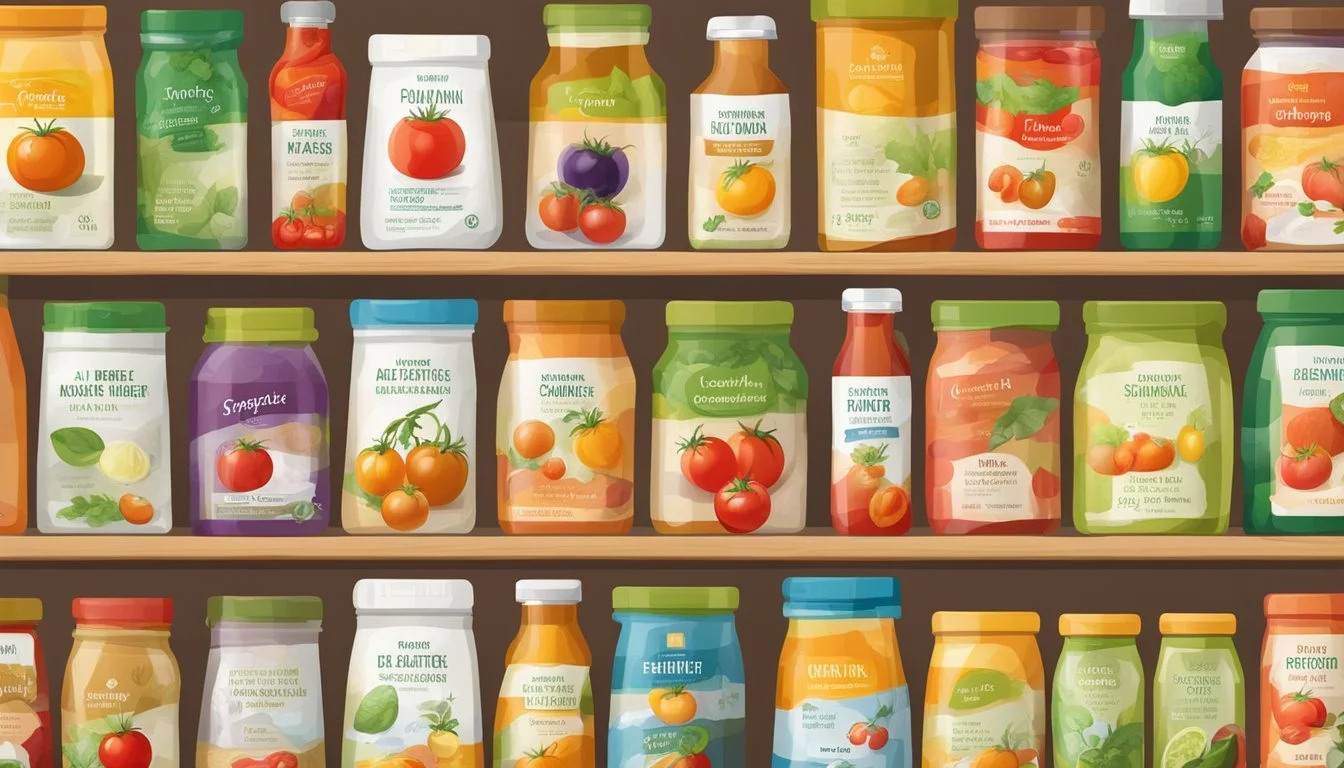Tomato Puree Substitutes
Best Alternatives for Cooking
Struggling to find tomato puree for your recipe? Don't fret. Many common kitchen staples can fill in seamlessly. Tomato paste mixed with an equal amount of water makes an excellent substitute, matching the flavor and texture closely to that of tomato puree. This simple combination is often found in most households, making it a convenient and effective alternative.
While tomato paste and water is a top choice, other options are also available. If you're in a pinch, tomato sauce can serve as a solid substitute, though it's usually thinner and may need to be reduced. Although ketchup isn't the ideal replacement due to its strong flavor profile, it can be used in recipes where the puree isn't the star ingredient.
Utilizing these readily available alternatives ensures that your culinary creations continue without interruption. By understanding the various substitutes and how they can be applied, you ensure that your recipes retain their intended taste and texture, even when tomato puree is not on hand.
Understanding Tomato Puree
Tomato puree is a versatile ingredient widely used in various dishes. This section explores its definition, roles in cooking, nutritional profile, and common culinary uses.
Defining Tomato Puree
Tomato puree is a thick liquid made from cooked, peeled, and strained tomatoes. It typically has a smooth texture and a deep tomato flavor. Unlike tomato sauce, it is unseasoned, which allows for flexibility in recipes. Homemade tomato puree can be made by blending cooked tomatoes and then straining the mixture to remove seeds and skins.
Roles in Cooking and Recipes
In cooking, tomato puree serves as a base for many dishes. It enhances the flavor and color of stews, soups, and sauces. Its thick texture helps to create a rich consistency in recipes like pasta sauces and pizza toppings. Tomato puree also acts as a binding agent in casseroles and meatloaf, providing both moisture and depth of flavor.
Nutritional Profile
Tomato puree is a nutritious addition to meals. It is low in calories and fat, making it a healthy option for many diets. Rich in vitamins A and C, it supports immune function and skin health. Additionally, tomato puree contains lycopene, an antioxidant that may reduce the risk of certain diseases. It also offers dietary fiber, promoting digestive health.
Common Uses in Dishes
Tomato puree is frequently used in dishes like soups and stews to add depth and richness. In Italian cooking, it forms the base of many pasta sauces and is a key ingredient in pizza sauce. It can also be used in homemade ketchup and barbecue sauce. When making these dishes, the puree provides a smooth and uniform texture essential for a desirable consistency.
Tomato-Based Substitutes
When tomato puree is unavailable, there are several common tomato-based alternatives that you can use. These include tomato sauce, tomato paste, canned tomatoes, ketchup, and tomato passata.
Tomato Sauce as a Substitute
Tomato sauce can be a great substitute for tomato puree. It has a thinner consistency but brings a similar tomato flavor. To use tomato sauce as a substitute, reduce the liquid in your recipe to account for its higher water content. It's excellent for soups, stews, and pasta dishes where a slightly thinner base is acceptable.
Tomato sauce often contains added seasonings, so adjust the spices in your recipe as needed. If you need a thicker texture, simmer the sauce until it reduces to a puree-like thickness.
Using Tomato Paste to Replace Puree
Tomato paste is a highly concentrated form of tomato puree. It has a thick consistency and intense tomato flavor. To use it as a substitute, mix one part tomato paste with one part water to achieve a similar consistency to puree. This mixture is ideal for dishes where a rich, concentrated tomato flavor is desirable.
Tomato paste is especially good for sauces, soups, and slow-cooked dishes. Since it’s more robust, you may not need to add as much seasoning. Adjust the quantity based on your taste preferences.
Options with Canned Tomatoes
Canned tomatoes come in various forms such as diced, crushed, and stewed. Each can be a viable substitute for tomato puree. For a smoother texture, blend diced tomatoes until you achieve a puree-like consistency. Crushed tomatoes are closer to puree and can be used directly.
Stewed tomatoes might need blending and straining to remove any chunks or skins. These options are versatile and can be used in sauces, soups, and casseroles. Keep in mind that canned tomatoes may contain added salts or preservatives.
Tomato Ketchup for Casual Recipes
Ketchup may not be an ideal substitute in every recipe but can work in a pinch for casual dishes like meatloaf or barbecue sauces. It has a distinct flavor profile with added sugar and vinegar, making it sweeter and tangier than tomato puree.
Reduce the amount of other sweet elements in your recipe and adjust the seasoning. While ketchup shouldn't be your first choice, it’s a handy alternative for everyday cooking when nothing else is available.
Incorporating Tomato Passata
Tomato passata is a pureed, sieved tomato product that is closer to tomato puree in consistency and flavor than other substitutes. It’s smooth and often lacks added ingredients, which makes it an excellent direct substitute for puree.
Less watery than tomato sauce but thinner than paste, passata is versatile and can be used in all kinds of dishes, from pasta sauces to soups. Because it is essentially uncooked and unseasoned, it offers a blank canvas to add your preferred herbs and spices.
Non-Tomato-Based Substitutes
Non-tomato-based substitutes offer a diverse range of flavors and textures, providing suitable alternatives for tomato puree in various dishes. These substitutes utilize ingredients such as red bell pepper, pumpkin, carrots, and other vegetables to deliver unique taste profiles.
Utilizing Red Bell Pepper Puree
Red bell pepper puree can serve as an excellent tomato puree substitute due to its vibrant color and naturally sweet flavor. To prepare, roast red bell peppers until charred, peel off the skin, and blend until smooth. This puree contains fewer acids than tomatoes, making it an ideal replacement in sauces and soups.
The sweetness of red bell peppers can lift the flavor of dishes, especially those with an Italian flavor profile. Enhancing the puree with spices like garlic and basil can also mimic traditional cooked tomatoes in recipes.
Innovating with Pumpkin Puree
Pumpkin puree offers a mild, slightly sweet option for replacing tomato puree. Canned pumpkin or freshly cooked and blended pumpkin works well in soups, stews, and casseroles. It thickens sauces without overwhelming the dish with strong flavors.
This puree pairs well with spices like nutmeg, cinnamon, and even Italian herbs like oregano. The creamy texture of pumpkin puree makes it an excellent thickening agent while adding a subtle depth to recipes.
Creative Uses of Carrot Puree
Carrot puree is another excellent non-tomato-based substitute. Carrots provide a natural sweetness and a slight earthy flavor that can enrich sauces and stews. To create, steam or boil carrots until soft, and then blend until smooth.
Adding herbs and spices can enhance the flavor, making carrot puree suitable for dishes requiring a milder background taste. Its rich color, though different from tomatoes, can still visually appeal in a variety of recipes.
Roasted Red Peppers for Depth
Roasted red peppers bring a smoky, robust flavor to any dish, making them a unique substitute for tomato puree. After roasting, blend the peppers into a smooth puree. This option works well in sauces, dips, and spreads, offering a depth that raw red bell peppers cannot provide.
Incorporating Italian flavor elements like basil, garlic, and onions can further enhance the similarities to traditional tomato-based recipes.
Exploring Other Vegetable Purees
Other vegetables such as zucchini, butternut squash, and beets can also be pureed as substitutes for tomato puree. Each vegetable brings its own distinctive flavor and texture.
Zucchini puree offers a neutral flavor suitable for a variety of dishes. Butternut squash provides a creamy and slightly sweet option. Beet puree delivers a unique taste and rich color but should be used sparingly to avoid overpowering the dish.
By exploring these alternatives, one can find suitable, flavorful non-tomato-based substitutes for their cooking needs.
Homemade Alternatives to Tomato Puree
Creating tomato puree at home allows for customization with fresh ingredients. Below, explore methods to make tomato puree from scratch, how to replicate its flavors with herbs and spices, and how to use sun-dried tomatoes for a more intense taste.
Making Tomato Puree from Fresh Tomatoes
To create homemade tomato puree, start with fresh tomatoes. Plum or Roma tomatoes are ideal due to their low moisture content.
Wash and pat dry eight pounds of tomatoes.
Halve the tomatoes and remove seeds and imperfections.
Blanch the tomatoes in boiling water for about two minutes.
Transfer to an ice bath immediately to loosen the skins.
Peel the tomatoes, blend until smooth, and simmer to reduce excess water. This method yields about 15 cups of unseasoned tomato puree, perfect for various recipes.
Herbs and Spices to Mimic Tomato Puree Flavor
When substituting tomato puree, adding certain herbs and spices can help replicate its flavor. Commonly used herbs include basil, oregano, and thyme.
These herbs imbue the dish with Mediterranean undertones. Garlic and onions are essential for depth in sauces, soups, and stews.
Use cumin for a smoky note or bay leaves during the cooking process. Adjust the quantities based on personal preference to achieve a similar taste profile.
Sun-Dried Tomatoes for Concentrated Taste
Sun-dried tomatoes offer a concentrated flavor that can serve as an alternative to tomato puree. They bring a rich, tangy taste to dishes.
Rehydrate sun-dried tomatoes by soaking them in hot water for about 20 minutes.
Drain and blend the rehydrated tomatoes into a thick paste.
Adjust the consistency with a bit of olive oil or broth if necessary.
This paste can substitute tomato puree, particularly in recipes requiring a bold flavor. Roasted tomatoes can also enhance the depth of these substitutes, blending well with sun-dried varieties.
Use these methods to create tomato puree substitutes that enhance your cooking with fresh, rich, and customizable flavors.
Substitutes for Specific Dishes
When replacing tomato puree in various dishes, consider how each substitute alters the flavor and texture. Different recipes may require unique adjustments to maintain the desired taste and consistency.
Tomato Puree Alternatives for Pasta Sauce
In pasta sauces, maintaining a rich tomato flavor is crucial. Tomato paste mixed with water can be a suitable substitute. Use a 1:1 ratio of paste to water. For a lighter taste, tomato sauce works well due to its thinner consistency but may require longer cooking to thicken. Crushed tomatoes offer a heartier texture and a fresh taste, making them a favorite in many traditional pasta recipes.
Picking Substitutes for Pizza Sauce
For pizza sauce, the consistency and richness of flavor are important. Marinara sauce is an excellent alternative, as it already includes herbs and spices that complement pizza. Another option is ketchup mixed with water; use equal parts and adjust for thickness. For a less sweet option, mix tomato paste with some oregano and basil to mimic traditional pizza flavors more closely.
Choosing Substitutes in Marinara Sauce
Marinara sauces benefit from substitutes that can match their herby and rich profile. Tomato paste combined with water creates a similar base. Adding a blend of dried oregano, basil, and garlic powder helps to match the flavor. Crushed tomatoes can also be used, offering a chunkier texture. Adding seasonings like onion powder and red pepper flakes can elevate the flavor profile.
Adapting Substitutes for Casseroles
Casseroles often require a thicker tomato base that blends well with other ingredients. Tomato paste with water offers a rich and thick consistency, providing flavor without excess liquid. Tomato sauce works well but may need cooking down to avoid a watery result. Mixing in diced tomatoes can also contribute to both flavor and texture, especially in heartier casserole recipes.
Ratio and Proportion for Substitutions
This section explores how to use various substitutes for tomato puree effectively. It covers the importance of consistency, flavor balancing, and the role of additional water.
Consulting Recipes for Consistency Adjustments
Consistency is key when substituting tomato puree. While tomato paste and water can mimic the thickness of tomato puree, ensuring the right balance requires checking the original recipe.
For example:
Tomato Paste and Water: Use equal parts to achieve a similar thickness.
Ketchup and Water: Mix 1 part ketchup with 1 part water and adjust for the desired thickness.
Different recipes may need tweaks, so consulting them for texture needs helps achieve the best results.
Balancing Flavor Intensity
Tomato puree is typically unseasoned, so flavor adjustments are necessary when using alternatives like ketchup or pizza sauce.
Ketchup: Dilute with water to reduce sweetness and spice.
Pizza Sauce: Has added herbs and spices, so reduce additional seasonings in your dish.
Balancing flavors helps maintain the intended taste profile.
Water and Substitutes for Thinner Consistency
Some substitutes can be thicker than tomato puree. Adding water regulates consistency without compromising flavor.
Tomato Sauce: Usually thinner, may not need extra water.
Tomato Paste and Water: Combine equal parts for a consistent result.
Adjusting water content ensures the substitute seamlessly integrates into any recipe.
Commercial Puree Alternatives
When tomato puree is unavailable, several commercial products can serve as substitutes. They vary in flavor, texture, and seasoning, providing versatile options for different culinary needs.
Pre-packaged Sauces and Purées
Tomato Paste: Combining equal parts of tomato paste and water can create a mixture with a similar consistency and flavor to tomato puree. This method is practical as tomato paste is a concentrated form of tomatoes, offering robust flavor.
Canned Sauce: Tomato sauce or pasta sauces such as Ragu can be used in place of puree. These sauces are usually seasoned, so adjust the additional spices in your recipe accordingly. Opt for plain tomato sauce for a closer match in taste.
Strained Tomatoes: Strained tomatoes, also known as passata, offer a smooth texture similar to tomato puree. These are sold in jars and provide a pure tomato taste without added seasoning, making them a versatile option for various recipes.
Condiments as Quick Fixes
Tomato Ketchup: Ketchup can substitute for tomato puree in certain cases. It is sweeter and more acidic due to added sugar and vinegar, so use it in dishes where these flavors complement the overall taste.
V8 Juice: This vegetable juice blend, primarily made from tomatoes, can replace tomato puree. It has a thinner consistency but can work in soups or stews. Consider reducing the liquid content in your recipe to balance the texture.
Selecting Supermarket Alternatives
Plain Tomato Sauce: When browsing supermarket aisles, check for plain tomato sauce. It provides a similar texture to puree but may contain additional seasonings. Adjust your recipe to accommodate these extra flavors.
Pasta Sauces: Ready-made pasta sauces, such as those from Ragu, can be used as a substitute. These sauces often include herbs and spices, which can enhance the dish, but make sure to account for these added elements when seasoning.
Strained Tomatoes in Jars: Another excellent option is strained tomatoes available in jars. These products are typically free from additives and provide a pure tomato flavor similar to homemade tomato puree, making them a suitable replacement in many recipes.





